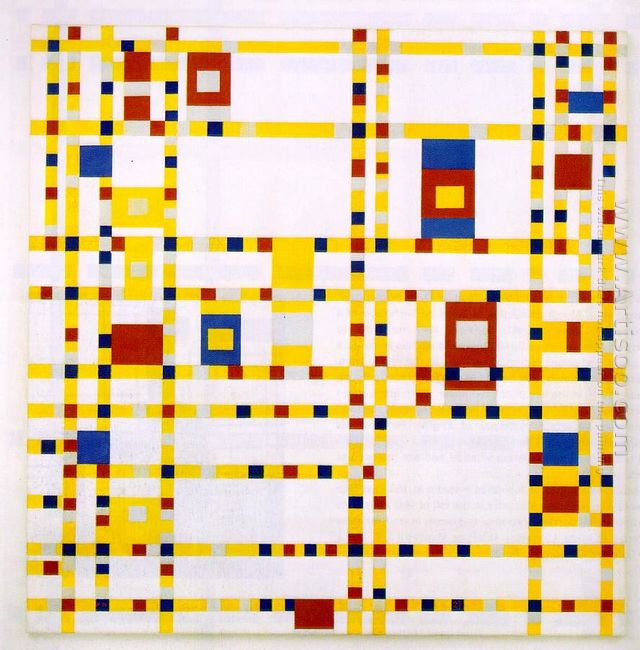The geometric abstract painting took style magazine as the center and emerged in Holland in 1917, whose founder was T.van Duisburg and leader was P. Mondrian. Mondrian liked to use neo-plasticism, so style painting was also called neo-plasticism. Neo-plasticism completely refused any use of concrete elements and advocated the geometric abstraction to express pure spirit. And it believed that niggling details and specific description could avoid individuality and particularity to acquire the common pure spirit of humans.
Neo-plasticism painters included the Hungarian painter V. Hussars, architect J.J.P Uhde, poet A. Cock, and the sculptor Dungeluo. In the abstract and simplistic slogan, neo-plasticism advocated the mathematics spirit and referred to all things which lacked of clarity and order as Baroque. The paintings of Mondrian and Duisburg combined the horizontal and vertical lines in the plane and formed the right angle or rectangular blended with red, blue, and yellow. Dungeluo applied this principle into sculptures. Different from Mondrian, his works were based on the mathematics basis as the foundation and used the perpendicular and parallel to combine a certain space pattern from some simple stereo units. Neo-plasticism produced a quite big effect on the building of the 20th century.
Neo-plasticism was produced during the First World War. Artists saw the social contradiction and confusion and the decay of capitalism. They did not know the law of social development, mistook the use of spirit and art that could save the society, and formed a spiritual world by using geometry abstract lines and colors to replace the capitalist world. Therefore, its ideological foundation was idealism and utopian socialism. Activities of neo-plasticism continued to 1931.






